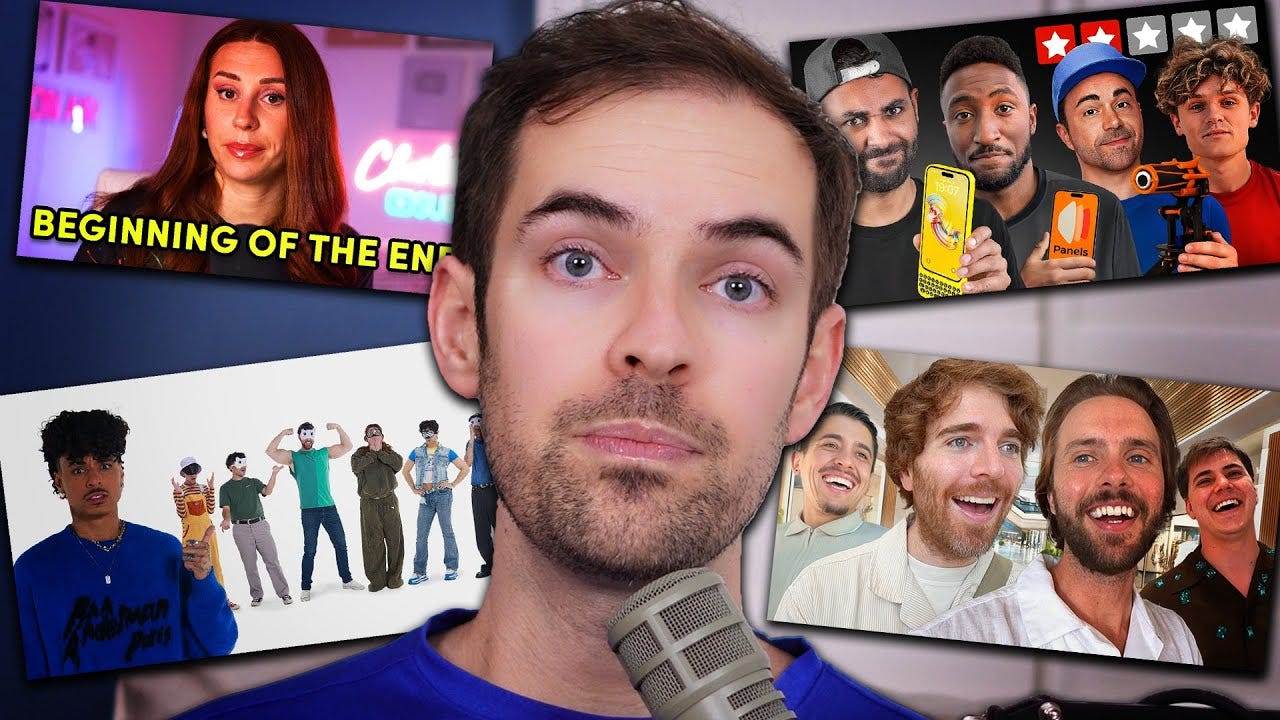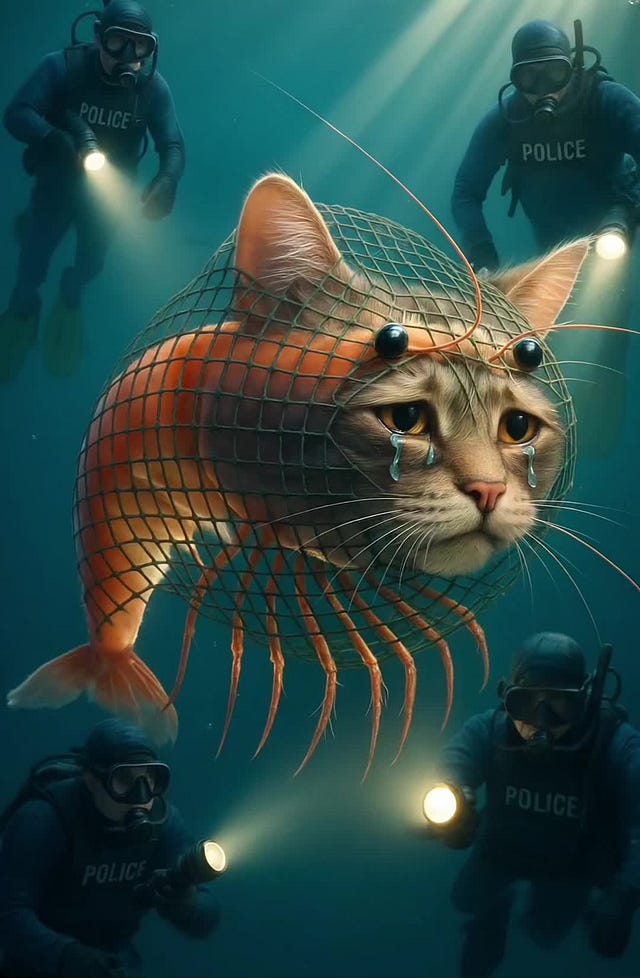Keep scrolling for a breakdown of the womanosphere.
From REMMIE By Riley applications flooding TikTok to Bailey from All For Mimi being plucked out of obscurity to create content for the brand, work-based content is all the rage. Not only are users getting hired from the platform, but employee-generated content (ECG) is also a new strategy for many brands. While it seems to work, TikTok user @holijade thinks it is on the way out.
For those unfamiliar, this type of content is made by employees, showing their company’s products and work environment.
Although it feels harmless, @holijade questions the cost of this type of content, particularly regarding personal boundaries.
“It’s giving lawsuit, or HR nightmare… that’s why its going to be gone in the next two years.”
The creator points to Bailey from All For Mimi as an example. Bailey and his boss — the Sophadophaa — recently travelled to LA for Coachella. The pair documented the trip, leaning into their friendship.
Tiktok failed to load.
Enable 3rd party cookies or use another browserSome users have started questioning whether the boundaries between employer and employee could become blurred in these situations.
“The lines are a little blurred here about employee, bestie [dynamic] and when they’re filming content when they are not,” explains the creator.
@holijade does note that some brand owners have found a good format for EGC, including documenting the nine-to-five or showcasing fun moments in the workplace.
As Brittney Saunders, founder of FAYT The Label, wrote in the comment section of TikTok, “As someone who creates this type of content, I absolutely agree with you! It has to be done carefully, and strong boundaries have to be set in place because, at the end of the day, we are workplaces.”
Watch the full video via TikTok.
While ECG may be an issue for TikTok, YouTube is experiencing its own creator problem. In a new video, YouTuber Jacksfilms — whose real name is Jack Douglass — notes that YouTube’s current algorithm has shifted the space entirely. But he goes on to share the beginning of a new form of content that will address these changes for the better.
Much has shifted since the early days of YouTube. While the platform once promoted new creators, there seems to have been a pivot away from prioritising this class of influencers.
YouTube’s algorithm is somewhat to blame. Today, the trending and explore page is seemingly boosting already-popular channels. Jack makes this point by scrolling through the trending tab, which consists of film trailers and content posted by established creators and companies.
Jack says, “That’s your competition, channels that are already successful. It can be a little intimidating.”
In response, Jack is launching a free weekly newsletter called “Credit the Creators,“ which will spotlight up-and-coming creators. The goal is to
introduce viewers to unknown YouTubers, allowing these creators to get their name out there.
“Now I know a newsletter isn’t incredibly sexy, but this is the exact thing that I wish I had when I was just starting out on YouTube almost twenty-years ago,” explains Jack.
That being said, “Credit the Creators” will give new-Gen YouTubers opportunities and provide a sense of community for viewers who hope to support smaller creators— over those that have (essentially) become corporations.
Watch the full video via YouTube.
Patreon’s rivalry with Substack is growing
While YouTube has (arguably) thrown smaller creators to the wayside, Substack and Patreon are fighting for the attention of such influencers. In a piece for Fast Company, Henry Chandonnet explores how the platforms are both vying to become the primary revenue stream for creators.
With Big Tech becoming increasingly politicised and the looming threat of a recession, platform loyalty is becoming less of a thing for creators. No longer can they rely on a particular platform and the money that comes from it.
“Rather than spending their days hawking products, many creators are turning to direct fan support, and two companies dominate that space: Patreon and Substack,” explains Chandonnet.
It should be noted that Patreon and Substack cater to different types of content creation— where Substack is (obviously) driven by the written word. But recently, both platforms have started to welcome livestreaming.
Patreon plans to roll out streaming in the next few months, where Substack has recently incorporated its own streaming feature.
Both platforms are seeking to capitalise on the mass move away from platforms that are sympathetic to the Trump administration’s agenda— particularly when it comes to issues around DEI and discrimination. Substack has already become a refuge for many, especially journalists leaving legacy media.
“The important thing about live video, community features, or any other publishing tools is that they aren’t just standalone features—they’re connected to a network that helps publishers grow both audience and revenue,” Substack co-founder Hamish McKenzie explains.
Aside from writers and journalists, Substack has been actively courting TikTok personalities. Take Hannah Neeleman of Ballerina Farm, for example, she’s expanded her brand by launching a Substack newsletter. With that in mind, the platform’s move into streaming— a highly lucrative form of content creation— isn’t all that surprising.
Patreon has obviously found success with its direct-to-consumer model, with more than half of the $290 billion creator economy comes from such programs.
Read the full article via Fast Company.
As platforms compete for users’ attention and money, so are trending niches and creators. In a new piece for The Guardian, Anna Silman explores a new right-wing movement infiltrating the digital world. Enter: The ‘womanosphere.’
She characterises the womanosphere as the manosphere’s counterpart— anti-feminist movement encouraging women to revert to traditional gender roles and beauty standards.
From Candace Owens’ Club Candace and the rise of tradwives, to Brett Cooper’s YouTube channel— which gained 900,000 new subscribers in the first quarter of 2025— the ‘womanosphere’ is clearly gaining serious traction.
“While the women behind these outlets all have different styles and tactics, they are mostly aligned in their desire to return to a gender-essentialist worldview: women as submissive homemakers, men as strong providers,” Silman explains.
Many social media users argue that creators within the so-called “womanosphere” have become tools to spread conservative propaganda, aligning with the political zeitgeist in the United States.
Many appear to harbour the belief that conservatives are the real “oppressed minority,” using their platforms to air grievances against “wokeness”.
“They claim that the liberal media and Hollywood are promoting feminist propaganda, and so they must fight back,” Silman writes. ”Their ideology lines up neatly with the Trump administration’s quest to dismantle reproductive rights, roll back protections for LGBTQ+ people, and advance an anti-science agenda that puts the health of millions of Americans at risk.”
Preying on the loneliness epidemic and economic stress experienced by Gen Z, these creators are targeting fragile and impressionable young women— mirroring the very tactics used by the manosphere.
“The type of woman these commentators valorize is thin, straight, fertile, traditionally feminine, conventionally attractive to men and white,” Silman continues. “Anyone who falls outside of this narrow mold is subject to relentless mocking and disparagement. Though they have different tactics and tones, like their cohorts in the manosphere, they play with the idea that calling women fat or ugly is fun and transgressive – framing it as part of a virtuous quest to rid society of woke, feminist ideals.”
Read the full story via The Guardian.
Why silly music is in right now
While the womanosphere is taking over, so is brainrot— and the odd, often nonsensical audios that come with it. In a recent piece for Dazed, Solomon Pace-McCarrick explores why we’re gravitating toward increasingly unserious sounds and songs online.
The rise of brainrot audios mirrors the current state of popular music, with hyperpop becoming increasingly influential. This glitchy, chaotic vibe aligns with the sensory overload of doomscrolling and the speed at which we now consume content.
This unserious energy has been personified by Charli XCX. Alongside the meme that would become Brat summer, the aesthetic of this album was hedonistic, silly and just fun.
Looking at what is trending online right now (like Italian Brainrot) is a case in point. As the journalist notes, “Young people’s humour is quite absurdist right now… Millennials were more nihilistic, but Gen Z prefers to be inane over straight bleakness.”
Tiktok failed to load.
Enable 3rd party cookies or use another browserHe continues by noting that the move toward hardstyle music, “represents the “ego-death” of techno, drum‘n’bass and other mainstream dance genres.”
As DJ and producer Finessa tells Pace-McCarrick, “Every time a big dubstep, techno or drum’n’bass producer comes along, they’re meant to be some mysterious edgy character… [It’s about] letting go of that character, letting go of the manufactured and serious image, wanting to just make tunes for the fun of it and not having to pretend to be someone you’re not.”
But brainrot and meme culture aren’t just impacting the types of music and musicians that are popular. They’re also influencing how artists market themselves. Artists are increasingly incorporating memes and trending topics into their marketing strategies, for instance.
All in all, the frenzy of different (and unserious) sounds, aesthetics and dances that are popular at the moment are reflective of the online landscape that Gen Z has grown up in.
“Being online these days is a sensory overload of visual and sonic stimuli that flood our brains through incoherent phrases and soundbites. It’s no surprise that we’re seeing music reflect this chaotic landscape,” internet expert and Dazed contributing editor Gunseli Yalcinkaya tells Pace-McCarrick.
Read the full piece via Dazed.











